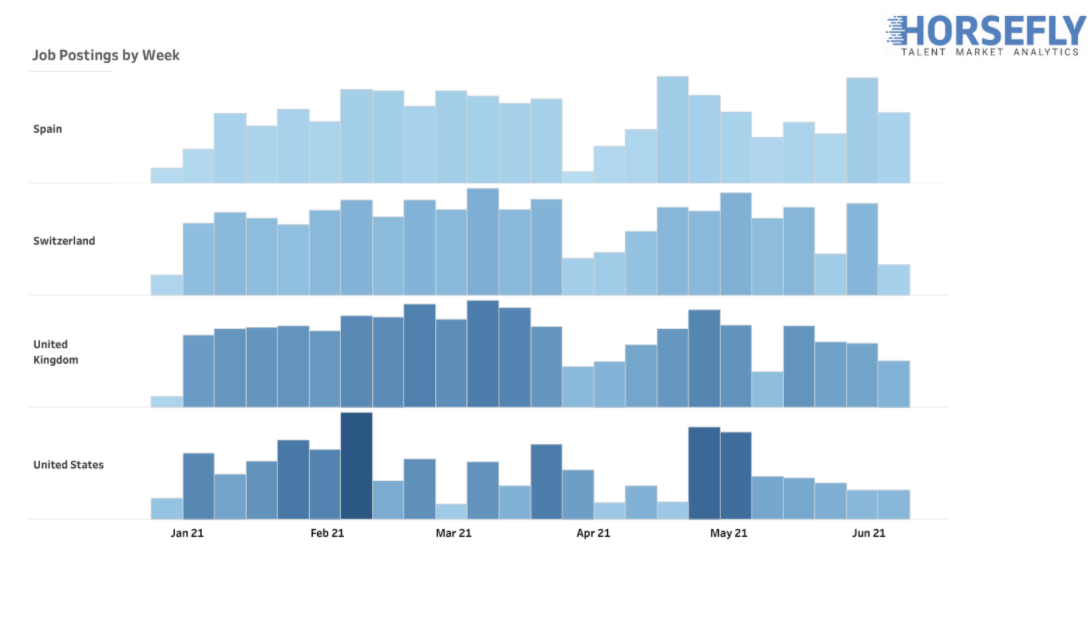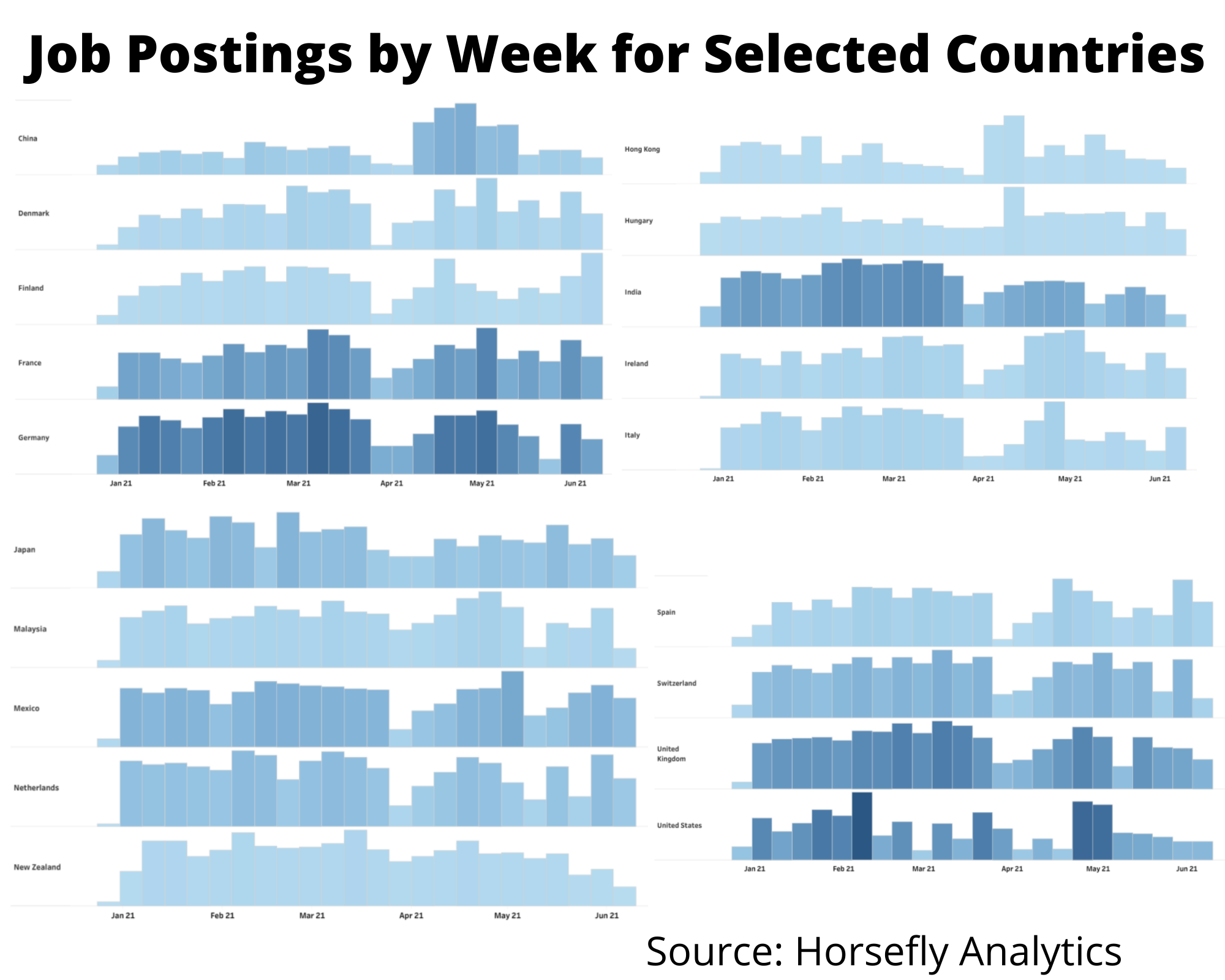Ask Horsefly: What is Going on in the Job Market?

As part of the work I’m doing with Horsefly Analytics, I get to ask for labor market reports that provide background data for some of the questions I have. Just recently, I have been digging into the job market as we exit lockdowns across the globe. I understand that each nation will have a different pace to this, but at some point soon, we will be able to pick up trends, and link job openings to exit from lockdown restrictions, in order to forecast what might be coming down the road.
I was prompted into this research when trying to understand the trends impacting jobs advertised on job boards and aggregators. Whilst I understand that not all jobs are advertised, this data does give a good indicator of how the market is moving.
The value of the job board market is forecast to continue to grow year on year in most analysts' forecasts. I found this forecast a bit strange. Not because I believe that the much hyped “death of the job board” might come about, but the wider adoption of programmatic technology, means job ad buying has, and will continue to get much smarter.
The trends I’m seeing today is that this is resulting in advertised jobs staying public for much shorter periods of time, with companies buying visibility only until a fixed number of applications have been achieved. My question was that if hiring companies were paying for jobs to stay live for shorter durations, then the spend would be less. That is, after all, one of the main reasons for adopting programmatic advertising. Even if the number of jobs advertised remained at a similar level, I would expect a forecast of market value to decline, as spend per job decreases.
I have had quite a few discussions with recruitment leaders, job board heads, and others on this topic. One of the themes I’m constantly hearing is that companies are now advertising more roles, as the cost per role decreases. This is certainly what I was hearing from the job distribution companies, and aggregators. Companies are using job boards to attract candidates for a broader range of jobs, relying on programmatic technology to ensure they are spending in the most efficient way. This should not come as a great surprise, as it has marked a decrease in the cost per application, and improved the ratio of applications to hire (by reducing total volumes.)
At the same time, relying on traffic from other sources via aggregation, has seen organisations reducing the number of job boards they are using in any one campaign. I’m tracking the data on this at the moment to prove the theory, and will share it with you over the next few months, when I have a conclusive trend line. Early indications are that both of these conclusions look to be correct.
To start off this research, I wanted to understand how the advertised jobs market has been performing over the last few months as we come out of COVID restrictions across much of the globe. I asked Horsefly to come up with this data, and think some of the trends provide some new insights into what is going on. A snapshot of this data for a few selected countries in Horsefly's database is below and at the top of the page.

To give you some context as to how these reports have been compiled, I have asked CEO Will Crandle, to explain the methodology:
“The chart data has been taken from thousands of sources globally, primarily job boards and job postings on sites such as LinkedIn. We process the data in a number of ways:
1. De-duplicate based on job titles, company name, skills AND location (including sub location posting and remote working roles advertised country wide).
2. We remove recruitment agency adverts, which are generally duplicated across a number of them.
3. Our data has mirrored sources such as the ONS, which means we’re able to do what they do, in a much more granular way, and can show the insights in real-time.
4. Each bar represents a week, and the total unique jobs advertised during this time frame.”
Looking at the unique advertised jobs numbers for the last 23 weeks, it is interesting to note that job numbers peaked in March and May, and have stalled somewhat in June. This shows a trend quite different to the popular narrative that hiring has never been busier, it seems it was, just a month ago. This could be explained by some false highs as depressed sectors such as retail and hospitality experienced surges as they reopened to the public. We were describing this as the “great rehire” as we were coming out of lockdowns.
This makes for interesting reading. I will update you on other trends in a series of posts. If you have a labor market insights question you want to ask Horsefly Analytics, drop me a message or post it in the comments. There has never been a more important time to get access to credible data.
